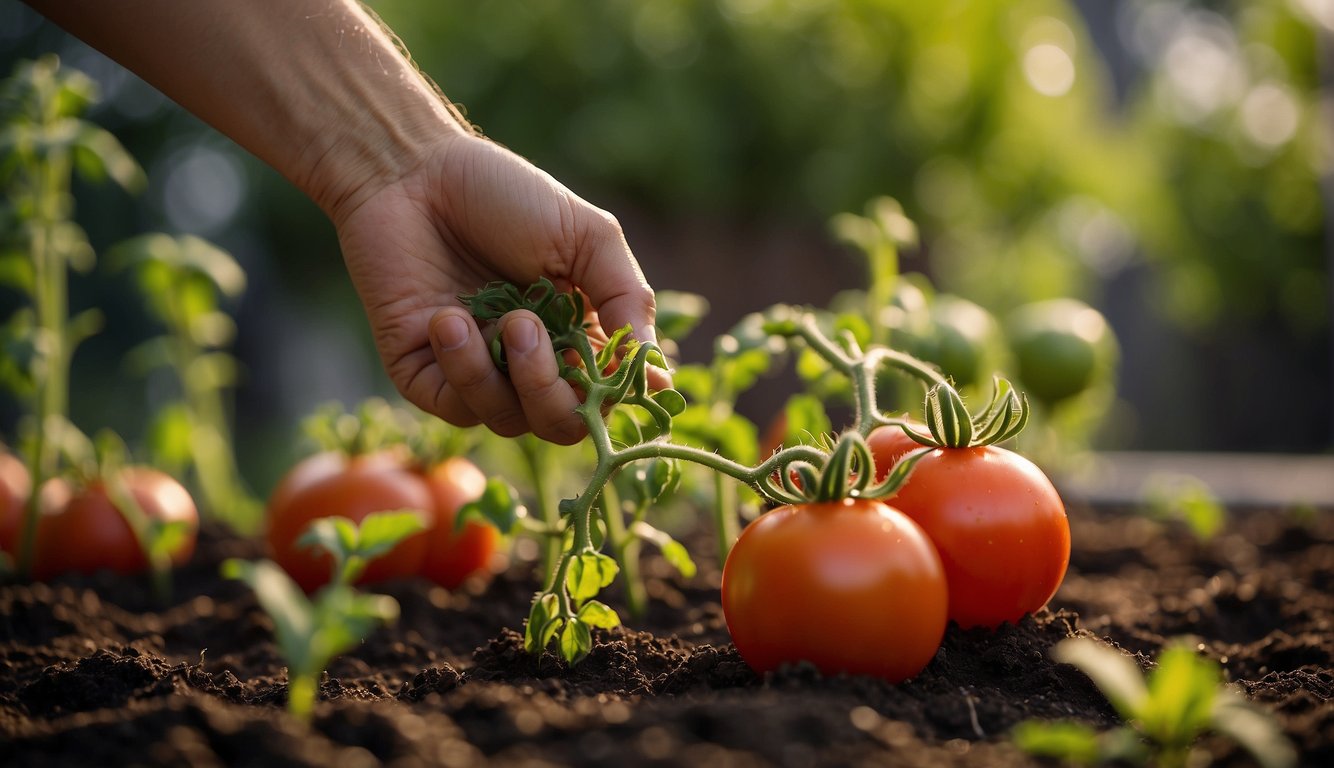TheHerbProf.com is a treasure trove of knowledge for those interested in natural healing and herbal remedies. The website is run by Paul Johnston MD. A naturopathic who has not only received extensive education in the field but also has personal experience in self-healing.
How to fertilize tomato plants? Fertilizing tomato plants is an essential step for ensuring healthy growth and a bountiful harvest.
As a gardener, I have learned that tomato plants require specific nutrients to thrive, and fertilization is the best way to provide these nutrients.
In this article, I will share my knowledge and experience on how to fertilize tomato plants effectively.
Tomato plants require three essential nutrients: nitrogen, phosphorus, and potassium.
Nitrogen is responsible for foliage growth, phosphorus for root growth, and potassium for overall plant health.
Fertilizers are a great way to provide these nutrients to your tomato plants.
However, it is important to choose the right fertilizer and apply it correctly to avoid over-fertilization, which can damage the plant’s growth.
In this article, I will cover the different types of fertilizers available, their benefits and drawbacks, and how to apply them to tomato plants.
I will also discuss the best time to fertilize tomato plants and how to determine if your plants need fertilization.
By the end of this article, you will have a clear understanding of how to fertilize tomato plants and ensure a healthy and productive harvest.
Understanding Tomato Plant Nutrition – How to Fertilize Tomato Plants?
As someone who has grown tomatoes, I know that fertilizing tomato plants is essential to ensure a healthy and bountiful harvest.
However, before we dive into the specifics of how to fertilize tomato plants, it’s important to understand the basic principles of tomato plant nutrition.
Macronutrients and Micronutrients
Tomato plants require a variety of macronutrients and micronutrients to grow and produce fruit.
Macronutrients are nutrients that plants require in large quantities, such as nitrogen, phosphorus, and potassium (commonly referred to as NPK).
Micronutrients, on the other hand, are required in smaller quantities, but are still crucial to plant health. These include nutrients such as iron, zinc, and manganese.
Soil pH and Nutrient Availability
The pH of soil also plays a critical role in nutrient availability.
Most plants, including tomatoes, prefer soil with a slightly acidic pH between 6.0 and 6.8.
When soil pH is too high or too low, certain nutrients may become unavailable to the plant, even if they are present in the soil.
For example, when soil pH is too low, micronutrients such as iron and manganese may become too available, leading to toxicity.
The Role of Organic Matter
In addition to macronutrients, micronutrients, and soil pH, organic matter also plays a critical role in tomato plant nutrition.
Organic matter improves soil structure, increases water retention, and provides a slow-release source of nutrients.
Adding organic matter to soil can be done by incorporating compost, aged manure, or other organic materials into the soil before planting.
Selecting the Right Fertilizer – How to Fertilize Tomato Plants?
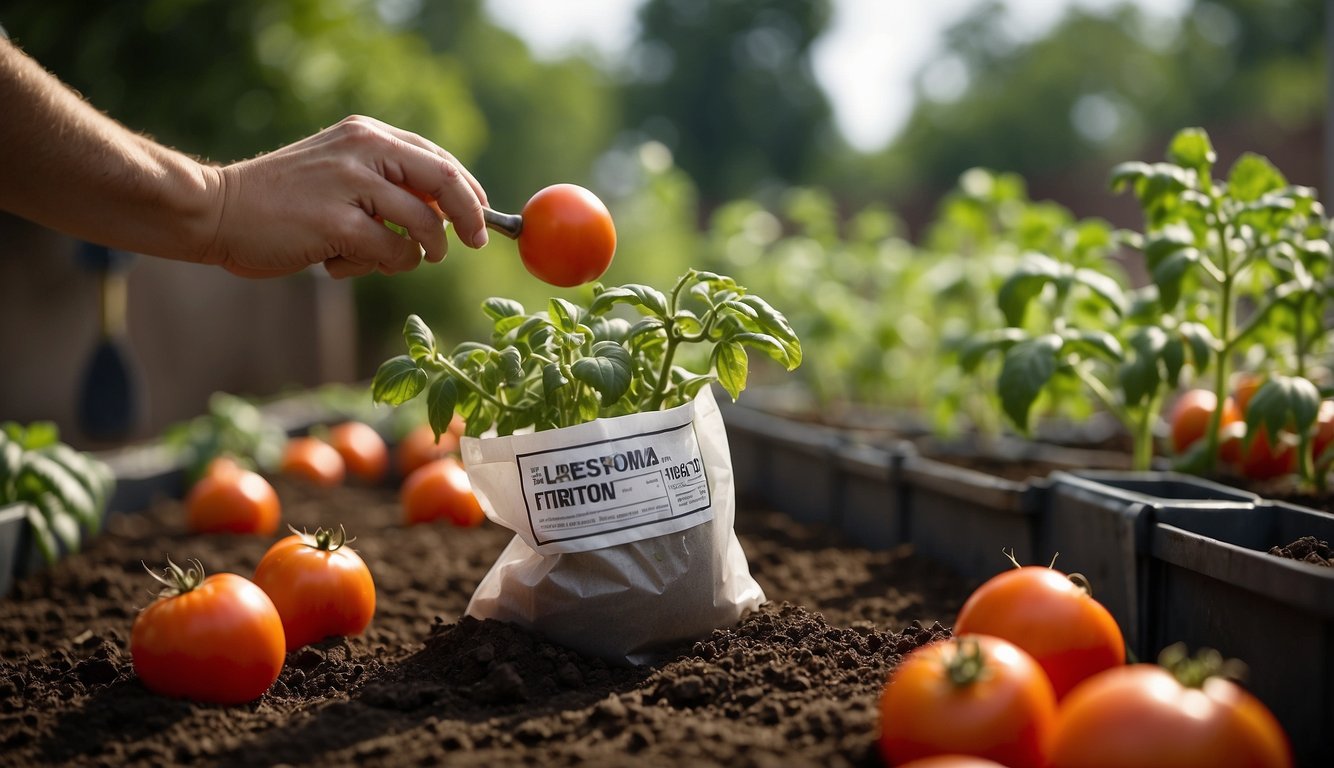
As a tomato plant owner, selecting the right fertilizer is crucial to ensure a healthy and bountiful harvest.
With so many options available, it can be overwhelming to decide which one to use. In this section, I will discuss some factors to consider when selecting the right fertilizer for your tomato plants.
Comparing Organic and Synthetic Options
Organic fertilizers are made from natural materials, such as animal manure, bone meal, and compost.
They are slow-release and provide a steady supply of nutrients to the plants over time.
Synthetic fertilizers, on the other hand, are made from chemical compounds and provide an immediate boost of nutrients to the plants.
Both types of fertilizers have their pros and cons, and the choice ultimately depends on personal preference and gardening goals.
Understanding NPK Ratios
All fertilizers contain three primary nutrients: nitrogen (N), phosphorus (P), and potassium (K).
These nutrients are represented by the NPK ratio, which can be found on the fertilizer label.
The ratio indicates the percentage of each nutrient in the fertilizer.
For example, a fertilizer with an NPK ratio of 10-10-10 contains 10% nitrogen, 10% phosphorus, and 10% potassium.
It is important to choose a fertilizer with the right NPK ratio based on the stage of growth of your tomato plants.
Importance of Slow-Release Fertilizers
Slow-release fertilizers are designed to release nutrients gradually over time, providing a steady supply of nutrients to the plants.
They are a good option for gardeners who want to avoid over-fertilizing their plants.
Slow-release fertilizers also help improve soil health by promoting microbial activity and reducing nutrient runoff.
When selecting a slow-release fertilizer, look for one that is labeled as “balanced” or has an equal NPK ratio.
Fertilizing Techniques for Tomato Plants – How to Fertilize Tomato Plants?
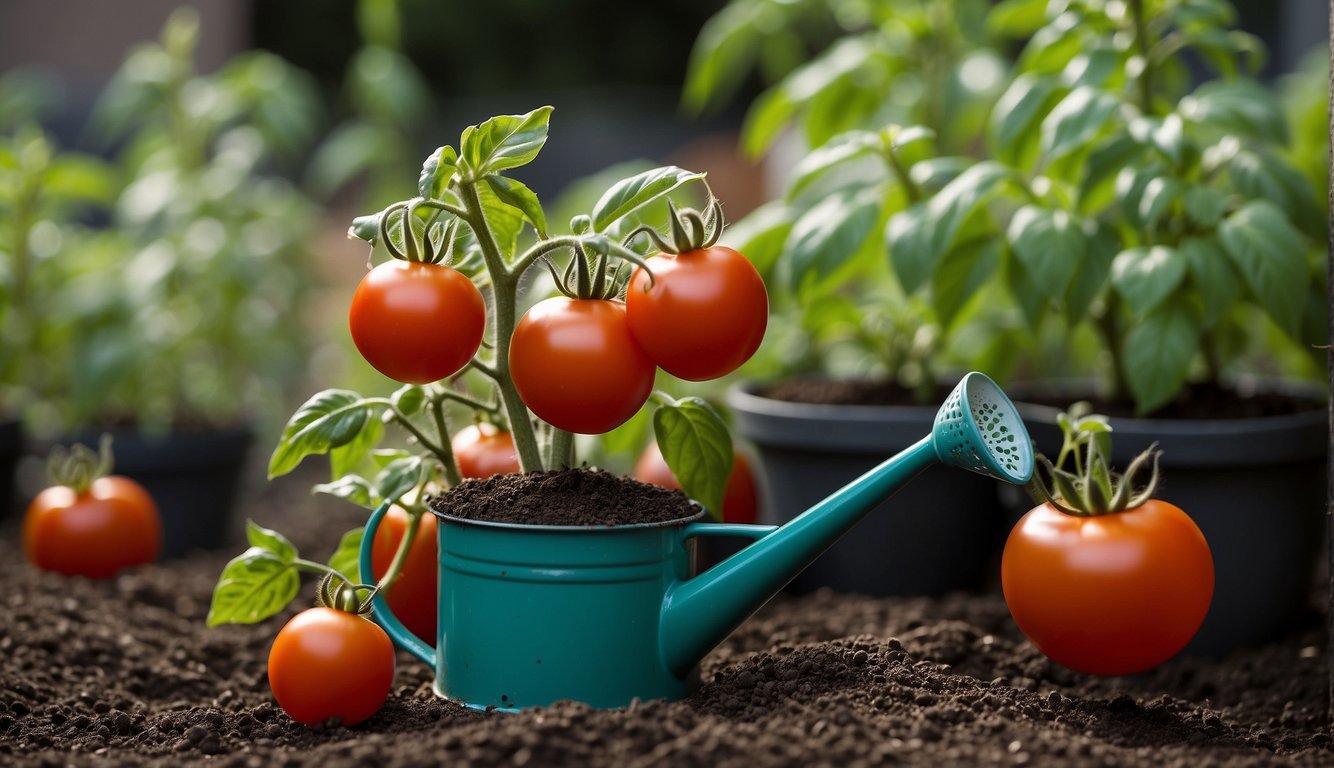
As a gardener, I know that fertilizing tomato plants is crucial for a good harvest. Fertilizers provide the necessary nutrients for the plant to grow healthy and strong.
In this section, I will discuss the different techniques for fertilizing tomato plants.
Pre-Planting Fertilization
Before transplanting the tomato plant, it is essential to prepare the planting hole with the right nutrients.
I recommend using a balanced fertilizer with equal parts of nitrogen, phosphorus, and potassium, such as 10-10-10.
Mix the fertilizer into the soil at the bottom of the planting hole. This ensures that the young plant has access to the necessary nutrients as it grows.
Fertilizing During the Growing Season
Once the tomato plant is established, it is time to start fertilizing.
I recommend using a nitrogen-rich fertilizer, such as fish emulsion, every two weeks during the growing season.
Blood meal is another excellent source of nitrogen that can be added every six weeks.
These fertilizers promote leafy growth and help the plant produce more fruit.
Fertilizing at Flowering and Fruiting Stages
Around two weeks before flowering, I recommend using a fertilizer with a higher phosphorus content, such as a 5-15-5 or a 10-20-10 formulation.
This will help the plant produce more flowers and fruit.
Once the fruit starts to develop, it is crucial to continue feeding the plant with light fertilizer every two weeks until the end of the growing season.
When fertilizing tomato plants, it is essential to water the plant well before and after applying the fertilizer.
This ensures that the nutrients are absorbed by the roots and not washed away.
I also recommend avoiding fertilizing the leaves and stems of the plant, as this can cause damage and burn the plant.
How to Fertilize Tomato Plants – How to Fertilize Tomato Plants?
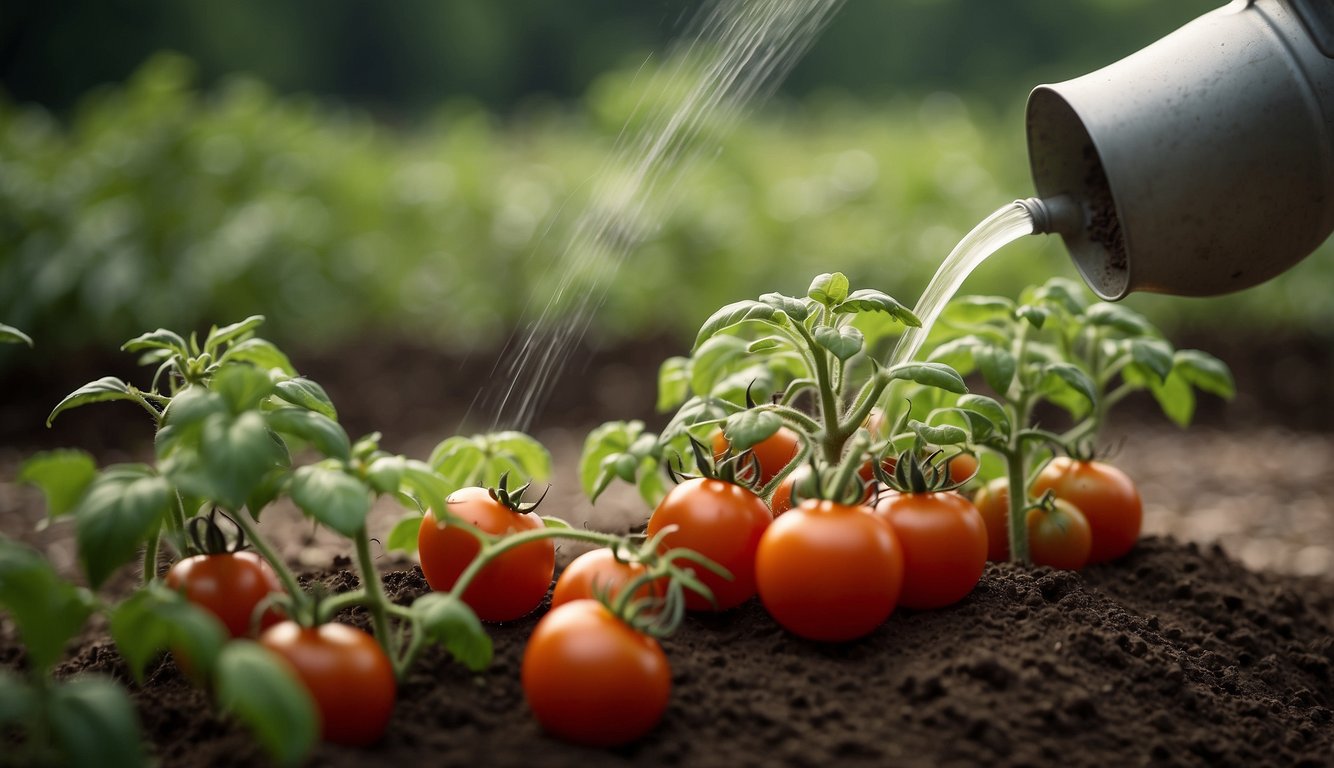
As a seasoned gardener, I have learned that fertilizing tomato plants is crucial to ensure a bountiful harvest. In this section, I will share my knowledge on how to fertilize tomato plants effectively.
Mixing Fertilizer with Soil
Before planting your tomato seedlings, it is important to mix the soil with fertilizer.
I recommend using a balanced fertilizer, such as a 10-10-10 blend, which contains equal amounts of nitrogen, phosphorus, and potassium.
Mix the fertilizer into the soil at the bottom of the planting hole, about six inches away from the plant’s roots. This will prevent the fertilizer from burning the roots and ensure that the plant can easily access the nutrients.
Application Methods and Techniques
Once your tomato plants have been planted, it is important to apply fertilizer to the soil around the base of the plant.
A common method is to use a dry fertilizer and apply it in a band around the plants, ensuring it is well-distributed and incorporated into the soil.
Another method is to use a liquid fertilizer mixed with water and applied to the soil when watering plants.
When using any fertilizer, always apply at the rates recommended by the manufacturer.
Frequency and Timing of Fertilization
The frequency and timing of fertilization depend on the growing season and the fertilizing routine you choose.
Generally, tomato plants would benefit from being fertilized just before transplanting, at planting, before flowering, and when the fruits are small.
Wait 2-3 weeks before fertilizing newly transplanted tomatoes.
Side dress each plant with 1/2 to 1 tablespoon of balanced organic fertilizer.
Repeat fertilizing every 2-3 weeks, increasing amounts to 2-3 tbsp per plant.
As plants start heavy fruiting, switch to a fertilizer higher in phosphorus and potassium.
Avoid fertilizing too late in the season, as this can delay the ripening of the fruit.
Common Fertilization Challenges and Solutions
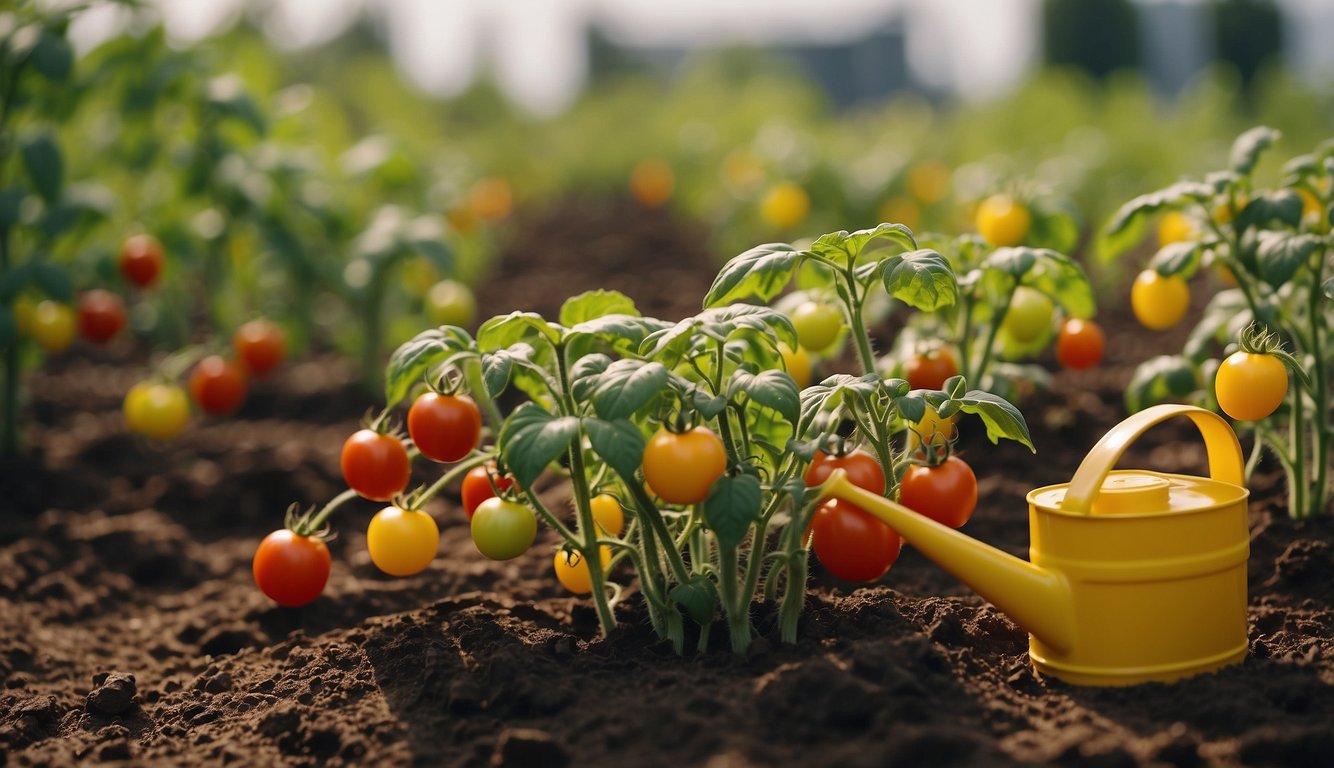
As with any gardening practice, fertilizing tomato plants can come with its own set of challenges. Here are some common issues that may arise during the fertilization process and some solutions to help you overcome them.
Dealing with Nutrient Deficiencies
One of the most common challenges faced during tomato plant fertilization is nutrient deficiencies.
These deficiencies can manifest as stunted growth, yellowing leaves, and poor fruit development.
To address this issue, it is important to identify the specific nutrient that is lacking and adjust your fertilization accordingly.
For example, if your plants are showing signs of nitrogen deficiency, you may need to add a nitrogen-rich fertilizer such as fish emulsion or blood meal.
If your plants are lacking in phosphorus, a fertilizer with a higher P value, such as a 5-15-5, may be necessary.
It is important to note that over-fertilization can also lead to nutrient imbalances, so it is important to follow recommended application rates.
Preventing Over-Fertilization
Over-fertilization can be just as detrimental to your tomato plants as nutrient deficiencies.
When too much fertilizer is applied, it can lead to nutrient imbalances, stunted growth, and even plant death.
To prevent over-fertilization, it is important to follow recommended application rates and to avoid applying fertilizer too frequently.
When using chemical fertilizers, make sure to carefully read the label and follow the instructions for application.
It is also a good idea to conduct soil tests periodically to ensure that nutrient levels are balanced and to adjust fertilization accordingly.
Adjusting Fertilization for Potted Tomato Plants
Tomato plants grown in pots can also present unique fertilization challenges. Because the soil in pots can become depleted more quickly than soil in the ground, potted plants may require more frequent fertilization.
However, it is important to avoid over-fertilization, which can be more common in potted plants due to the limited soil volume.
To address this issue, it is important to choose a high-quality potting mix that is rich in nutrients and to fertilize your plants according to their specific needs.
It is also a good idea to conduct periodic soil tests to ensure that nutrient levels are balanced and to adjust fertilization accordingly.
Additional Tips for Healthy Tomato Plants – How to Fertilize Tomato Plants?
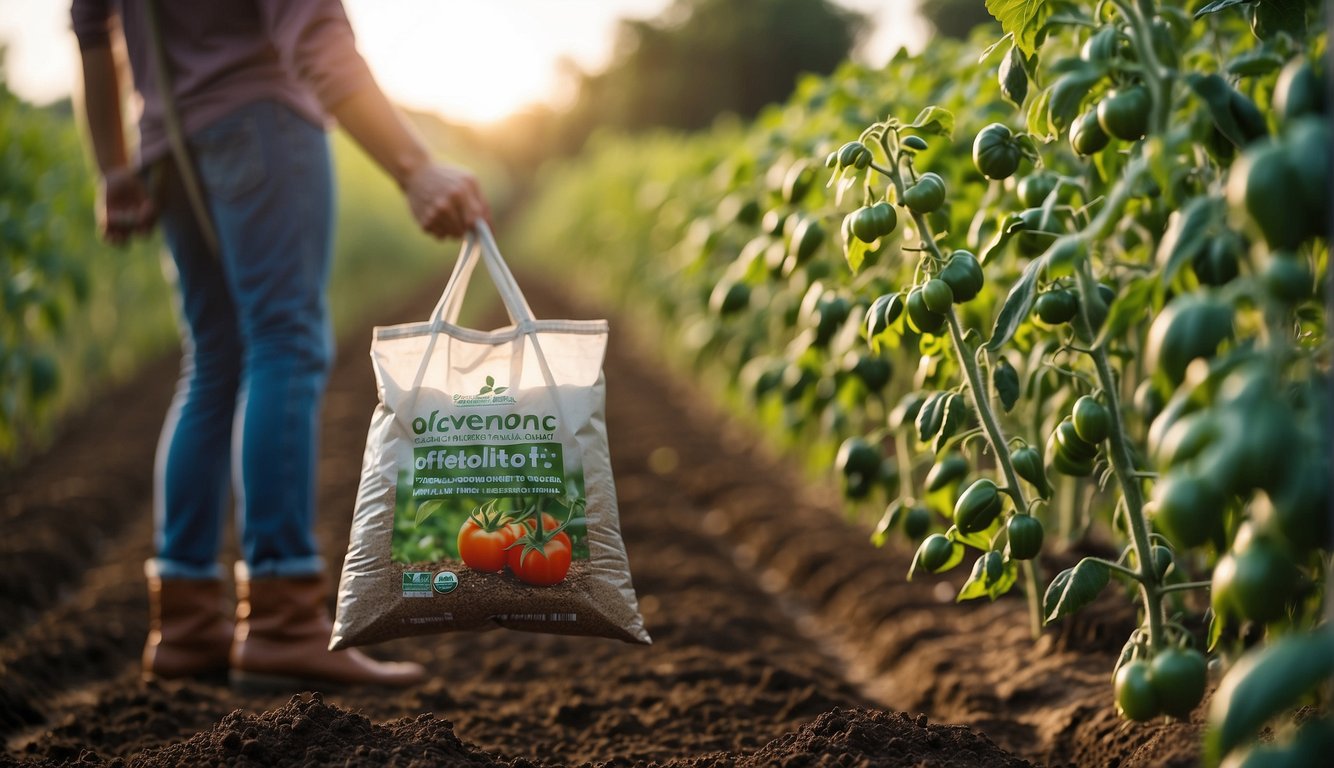
As an experienced gardener, I have learned that fertilization is just one aspect of growing healthy tomato plants. In addition to fertilizing, there are several other things you can do to ensure that your tomato plants are healthy and productive. Here are some additional tips:
Incorporating Compost and Manure
Incorporating compost and aged manure into your soil is a great way to improve soil quality and provide your tomato plants with the nutrients they need.
Compost and manure are rich in organic matter, which helps to improve soil structure and water-holding capacity. They also contain a range of micronutrients that are essential for healthy plant growth.
To incorporate compost and manure into your soil, simply mix them into the top few inches of soil before planting.
You can also use compost tea as a foliar spray to provide your plants with an extra boost of nutrients.
Using Mulch to Enhance Soil Quality
Mulching is another great way to enhance soil quality and improve the health of your tomato plants.
Mulch helps to conserve moisture, suppress weeds, and regulate soil temperature. It also breaks down over time, adding organic matter to the soil and providing a slow-release source of nutrients for your plants.
To mulch your tomato plants, simply spread a layer of organic material (such as straw, leaves, or grass clippings) around the base of each plant.
Be sure to keep the mulch a few inches away from the stem to prevent rot.
Regular Watering and Soil Testing
Regular watering is essential for healthy tomato plants.
Tomatoes require consistent moisture to thrive, so be sure to water your plants deeply and regularly. Aim to water your plants at least once a week, and more often during hot, dry weather.
In addition to regular watering, it’s also important to test your soil periodically to ensure that it has the right balance of nutrients.
You can purchase a soil testing kit at your local garden center or online. Testing your soil will help you determine whether you need to adjust the pH or add additional nutrients to your soil.
Combining How to Fertilize Tomato Plants with TheHerbProf
Let’s explore how our How to Fertilize Tomato Plants guide and the herbal wisdom at theherbprof.com can work together.
Our How to Fertilize Tomato Plants guide is your first step to a successful tomato harvest. But what about the rest of the journey? That’s where theherbprof.com comes in. It’s your herbal encyclopedia, including tomato care!
Picture this. You’ve followed our How to Fertilize Tomato Plants guide and your tomatoes are thriving. But you’re unsure about pest control or when to harvest. No problem! Theherbprof.com has all the answers. It offers a wealth of information on how to care for your tomato plants.
And there’s more! Theherbprof.com also shares the health benefits of tomatoes. So, while you’re enjoying the fruits of your labor, you’re also learning about their nutritional value.
So, let’s get growing with our How to Fertilize Tomato Plants guide, and let theherbprof.com guide us on this tomato-growing journey.
References – How to Fertilize Tomato Plants?
Little Herb Encyclopedia, by Jack Ritchason; N.D., Woodland Publishing Incorporated, 1995
The Ultimate Healing System, Course Manual, Copyright 1985, Don Lepore
Planetary Herbology, Michael Tierra, C.A., N.D., Lotus Press, 1988
Handbook of Medicinal Herbs, by James A. Duke, Pub. CRP Second Edition 2007
The Complete Medicinal Herbal, by Penelope Ody, Published by Dorling Kindersley
Check the Following Articles!
Pruning Tomatillo Plants: A Guide for Optimal Growth
Storage Apples: How to Keep Them Fresh for Longer
How to Grow Carrots in a Container? Tips and Tricks
Coffee House Plant: How To Grow And Care
Frequently Asked Questions – How to Fertilize Tomato Plants?
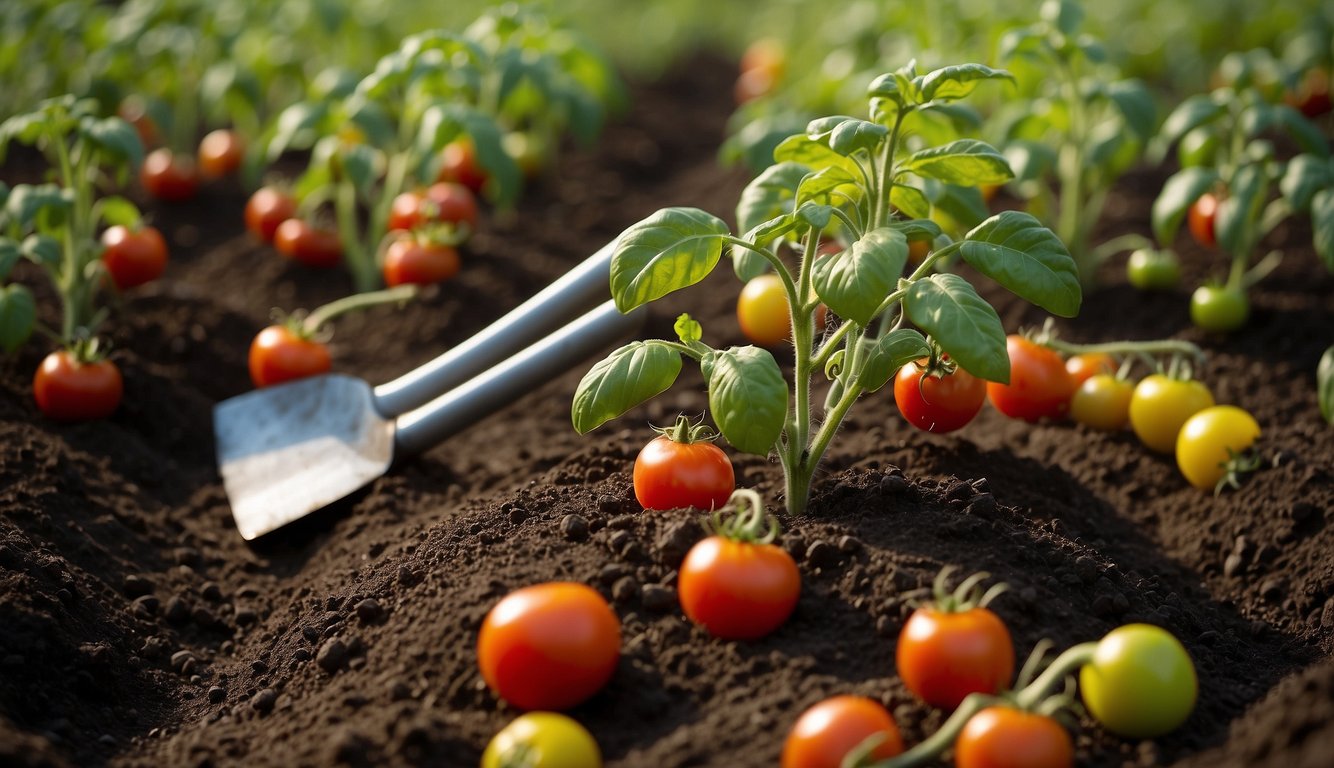
What type of homemade fertilizer can I use for my tomato plants?
There are several types of homemade fertilizers that you can use for your tomato plants.
One of the most popular is compost tea, which is made by steeping compost in water for several days.
Another option is to make your own organic fertilizer by mixing bone meal, blood meal, and fish meal.
You can also use Epsom salt, which is rich in magnesium, to improve the health of your tomato plants.
What is the ideal fertilization schedule for tomato plants?
The ideal fertilization schedule for tomato plants depends on several factors, including the type of soil, the climate, and the growth stage of the plants.
In general, it is recommended to fertilize tomato plants once a week during the growing season, starting a few weeks after transplanting.
It is also important to fertilize tomato plants with a balanced fertilizer that contains equal parts of nitrogen, phosphorus, and potassium.
Which NPK ratio is most suitable for optimal tomato growth?
The most suitable NPK ratio for optimal tomato growth is 5-10-10 or 10-10-10.
This means that the fertilizer should contain 5% nitrogen, 10% phosphorus, and 10% potassium.
Nitrogen helps promote leaf and stem growth, while phosphorus helps promote flower and fruit development. Potassium helps improve the overall health and vigor of the plant.
Are coffee grounds beneficial as a fertilizer for tomato plants?
Yes, coffee grounds can be beneficial as a fertilizer for tomato plants.
Coffee grounds are rich in nitrogen, which is an essential nutrient for plant growth. However, it is important to use coffee grounds in moderation, as too much can make the soil too acidic.
It is recommended to mix coffee grounds with other organic matter, such as compost or leaf mold, before using them as a fertilizer.
Can the same fertilizer be used for both tomatoes and peppers effectively?
Yes, the same fertilizer can be used for both tomatoes and peppers effectively.
Both plants have similar nutrient requirements and respond well to balanced fertilizers that contain equal parts of nitrogen, phosphorus, and potassium.
However, it is important to adjust the fertilization schedule and amounts based on the specific needs of each plant.
How should I fertilize tomato plants growing in pots?
Tomato plants growing in pots require more frequent fertilization than those grown in the ground.
It is recommended to fertilize tomato plants in pots every two weeks with a balanced fertilizer that contains equal parts of nitrogen, phosphorus, and potassium.
It is also important to water tomato plants in pots regularly to prevent the soil from drying out and becoming too compacted.
